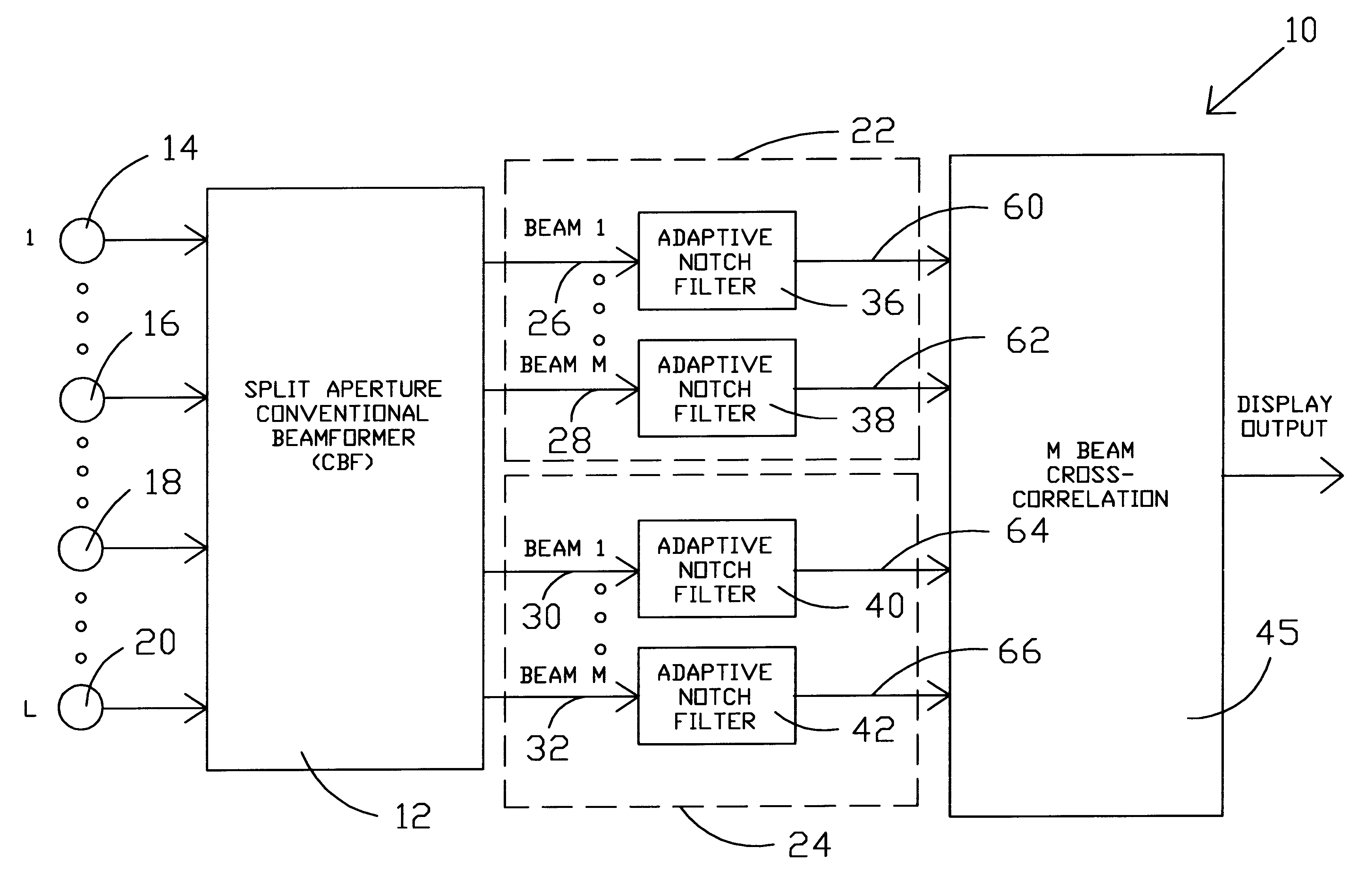Adaptive cross correlator
a cross-correlator and cross-correlator technology, applied in the field of systems, can solve the problems of affecting sonar effectiveness, affecting the effectiveness of sonar, and affecting the effectiveness of sonar, and achieving the difficult detection of peak detection of received sonar signals
- Summary
- Abstract
- Description
- Claims
- Application Information
AI Technical Summary
Benefits of technology
Problems solved by technology
Method used
Image
Examples
Embodiment Construction
An adaptive cross-correlator in accord with the present invention preferably uses an adaptive time domain notch filter at the input to the cross-correlator. One significant advantage of the present invention is a significant reduction in computations required during operation. In the present invention, the number of floating point operations required per update are of order M.times.P where P is the number of filter coefficients which is typically 15 or less and M is the number of beam pairs. An adaptive cross-correlator in accord with the present invention can therefore provide a significant reduction in processing throughput requirements as compared to the aforementioned SCOT method. Moreover, it has been shown that in the presence of noise and wide band signals only, SCOT will have reduced performance over a cross-correlator without SCOT that an adaptive cross-correlator in accord with the present invention will perform no worse than the standard cross-correlator in the presence o...
PUM
 Login to View More
Login to View More Abstract
Description
Claims
Application Information
 Login to View More
Login to View More - Generate Ideas
- Intellectual Property
- Life Sciences
- Materials
- Tech Scout
- Unparalleled Data Quality
- Higher Quality Content
- 60% Fewer Hallucinations
Browse by: Latest US Patents, China's latest patents, Technical Efficacy Thesaurus, Application Domain, Technology Topic, Popular Technical Reports.
© 2025 PatSnap. All rights reserved.Legal|Privacy policy|Modern Slavery Act Transparency Statement|Sitemap|About US| Contact US: help@patsnap.com



